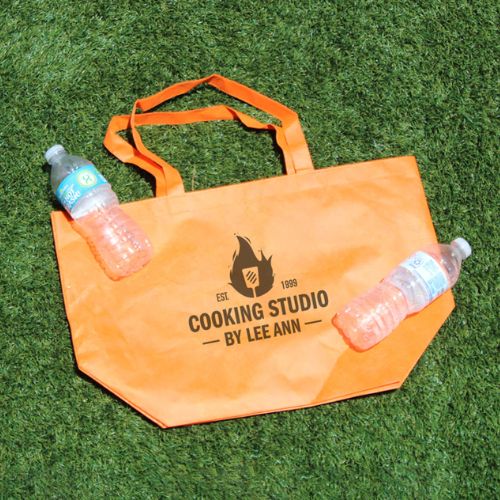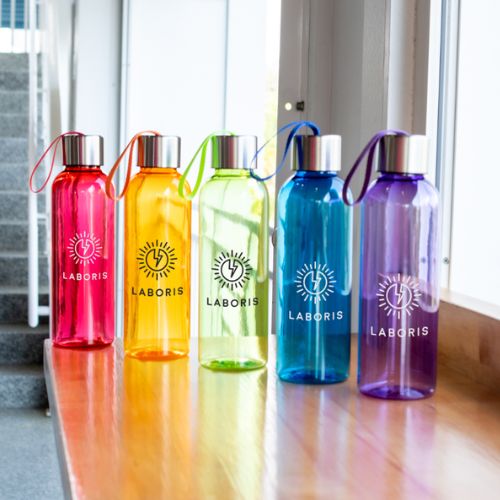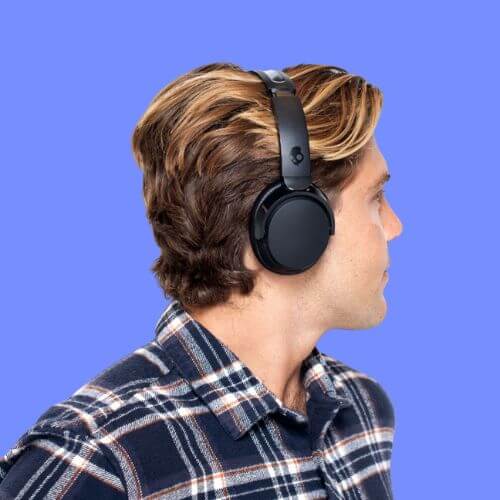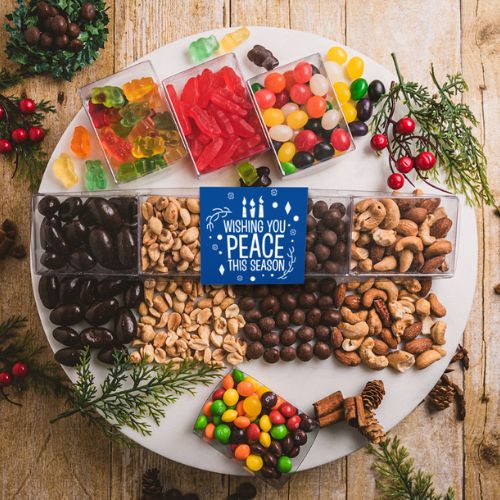Understanding the Different Methods of Printing on T-Shirts
Is it your turn to order company swag but you are unsure of how to proceed? Consider ordering some promotional shirts after you learn about the different methods of printing on T-shirts. Discover which methods bring out the most color, last the longest and make the best impression on your target audience.
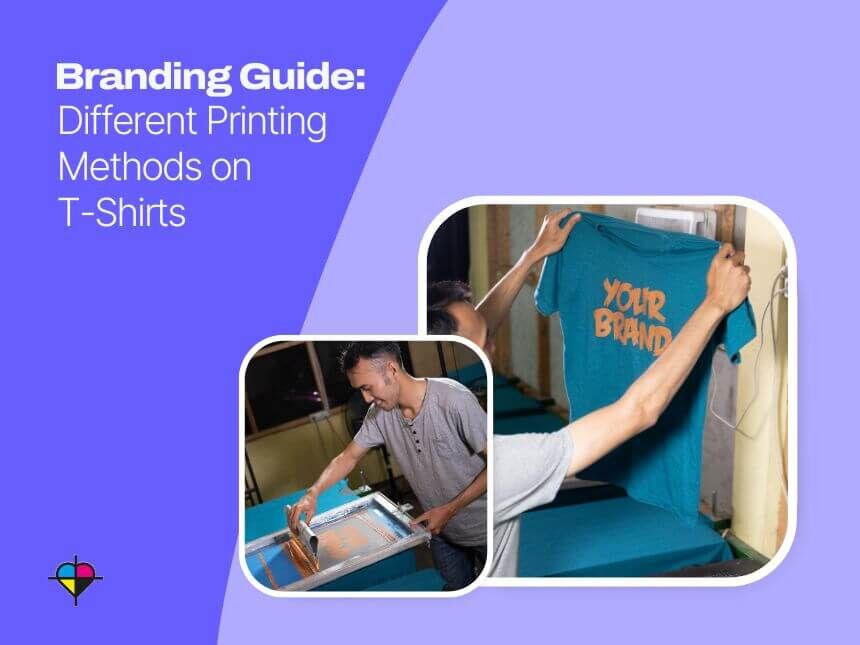
Are you looking for a way to elevate your promotional tops game? Whether you're using these t-shirts for company swag or giveaways, the printing method you choose can impact the outcome.
The t-shirt printing methods are crucial. Branding is more than just putting an image on fabric and calling it a day. Let's discuss the different printing techniques available for mass production of t-shirts.
Important factors to consider when discussing different print methods:
These are some of the things you should keep in mind when thinking about which t-shirt printing method is best for you.
- Your overall design
- Print colors (logo or other design)
- T-shirt material
- Your overall budget
- Number of items
- How detailed you want your branding to be
- Fabric types
- Color matching
- Color vibrancy
- Hand feel or the touch of the printing
Our guide will help you narrow down the best method of printing on t-shirts for your next order. We will walk you through the various branding methods to break down each option based on their pros and cons. By the end, you will have a better understanding of the different methods of printing on t-shirts.
Popular T-Shirt Printing Methods
Let's discuss the most popular printing methods available for your custom-printed shirts. This will help you identify which is the best method for your needs. Ultimately, you can read through the pros and cons of each method to see what best suits your requirements.
Screen Printing
The most popular printing method is screen printing. This printing process, also known as silkscreen, forces ink through a mesh screen stencil. Through this, vibrant and lost-lasting prints come alive with your design.
This method is best when choosing to print only a few colors at a time. Bulk printing is also possible with this method, as the set up is fairly simple. However, smaller orders can be more costly with regards to set up fees.
Pros:
- Ideal for vibrant and saturated colors
- Cost-effective for large orders
- Precise Pantone color matching
- Fast printing method, even large orders
- Withstand wear and tear through use and washing
Cons:
- Not ideal for small designs or details
- More colors = more cost
- Limited to standard print locations, like front or back of shirt
- Not cost-effective on small quantities
Direct-to-Garment Printing (DTG)
If you are looking to print cotton shirts, this is one of the best methods. Inkjet printers are best for printing images on clothes because they produce high-quality, colorful prints directly on the fabric. Choose this method when you are thinking about complex designs or other photographic images.
This printing method makes the most sense for small quantities of apparel and shirts in relation to the printing costs. The price for each printed item does not change. This is because the cost per unit stays the same, regardless of the quantity printed.
Pros
- Ideal for small quantities
- Produces high-quality prints with complex designs and details
- Allows for color printing
- Fast production giving you a quick turnaround time
Cons
- Price doesn't change when bulk printing shirts
- Limited to 100% cotton materials and other cotton blends
- Can fade overtime with washing
Direct-to-Film Printing (DTF)
One of the best methods of printing is the direct-to-film (DTF) printing methods. Film printing uses a special PET film applied to shirts with adhesive powder and heat, unlike DTG. It doesn't need garment pretreatment like DTG. This is because the design is already pre-printed on the film.
This printing method works well on many fabrics like cotton, polyester, and blends, keeping the results intact. The color is often more vibrant that with DTG, however this is because of the powder, which leaves the print feeling more like plastic.
Pros
- High-quality, full color printing
- Works well will intricate and complex designs
- Applicable to most fabric types
- Can print on both light and dark colored materials
- High resistance to wear and tear over time
Cons
- Final print can feel plastic-y
- Only for small items, such as face masks or shirts
- More complex printing method
- Limited to CMYK colors only
- Cost-prohibitive when printing larger amounts
➥ The first three are types of digital printing. These printing methods all use heat and pressure to transfer a design directly onto the material. They are classified as digital printing because the designs can be created digitally, then printed out to transfer onto the t-shirt.
Sublimation or All-Over Printing (AOP)
This is another popular and different printing method for shirts. First digitally print designs onto a heat transfer paper, then transfer them onto the shirt with a heat press. The ink turns into gas when heated, sticking to materials like polyester fabrics. Through this process, the dye deeply embeds into the fabric, resulting in memorable durable and vibrant prints.
Sublimation is different from other heat transfer printing methods because the ink seeps into the material. In other methods, the dye remains on the surface of the fabric. For this reason, it is not possible to use this heat press printing method on cotton shirts. Cotton is porous, which would leave the designs being dull and blurry because the dye will bleed into the fabric.
Pros
- Long lasting prints
- High photographic quality
- Produces vibrant and full-color prints
- Great for large, "all over" branding
Cons
- Limited to light colored fabrics
- Does not work on all fabrics, limited to polyester and other poly-blend
- Limitations with color printing, CMYK colors only
Embroidery
If you are looking for a printing method that will last, then embroidery is the right option. Unlike heat transfer, these designs are generally more professional in appearance.
Embroidery uses sewing machines to create a 3-D look and feel on a t-shirt. You must adhere to strict design requirements because the sewing machine used is limited. This includes restrictions on the type of design, the area on the t-shirt and the color options available. However, this is one of the longest lasting branding options you can choose.
Pros
- Durable and very long lasting
- No dyes
- More eco-friendly option
- Clean design, more professional
Cons
- Not ideal for detailed or intricate designs
- Fewer products offered for this method
- Pricier than other methods
- Strict design requirements
- Limited printing area and color options
What is the best method of printing on t-shirts?
It is hard to come to one conclusion when discussing the best printing methods for promotional t-shirts. As with most things, the perfect type of t-shirt printing method really depends on you and your goals. Each of these different methods of printing on t-shirts has strengths and weaknesses, pros and cons. Hopefully this guide will help you choose what makes sense for your next order.
Whichever method you choose, we are happy to speak with you. Our experts are standing by to walk you through your ordering process.
➥ We have many resources for you to learn more about various printing methods. Learn about the different methods that work best for various products in our full printing methods guide. Visit our Glossary for a deep dive into all our printing methods and other important terms related to branding.


